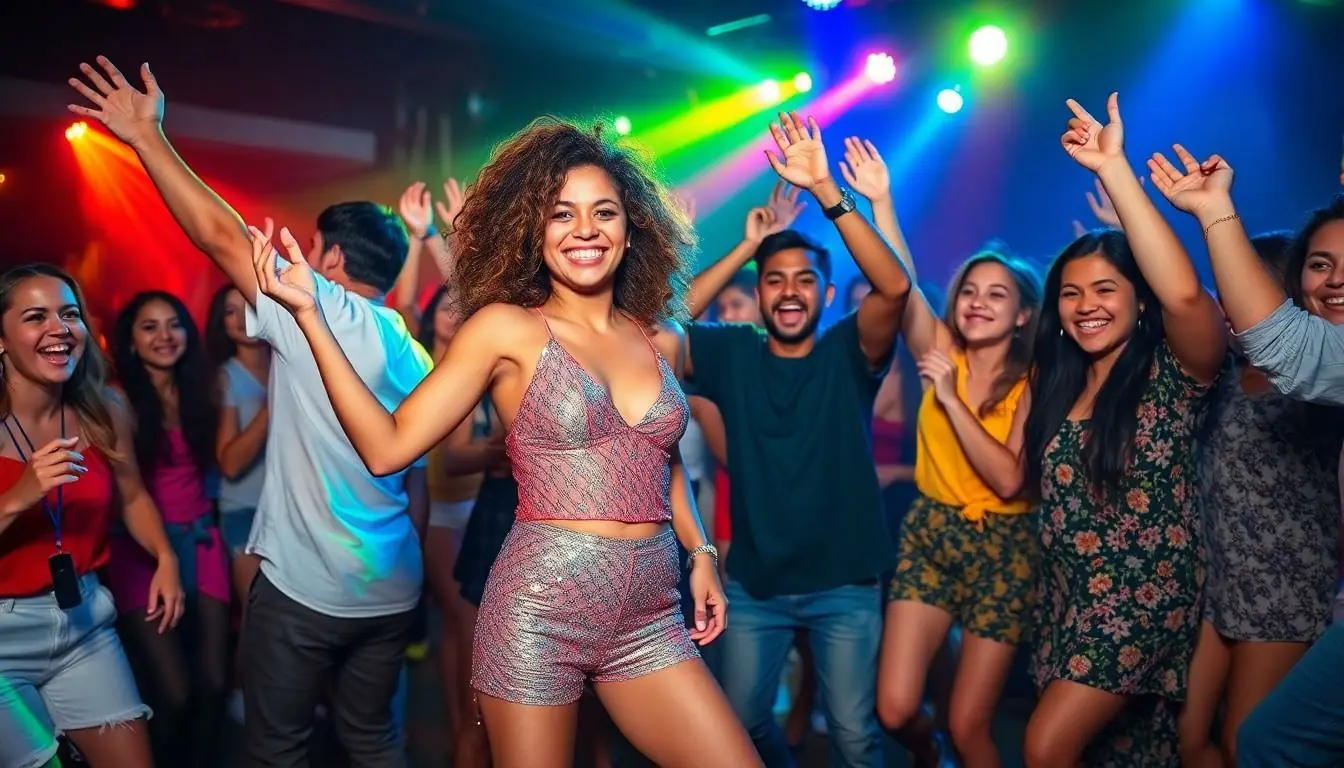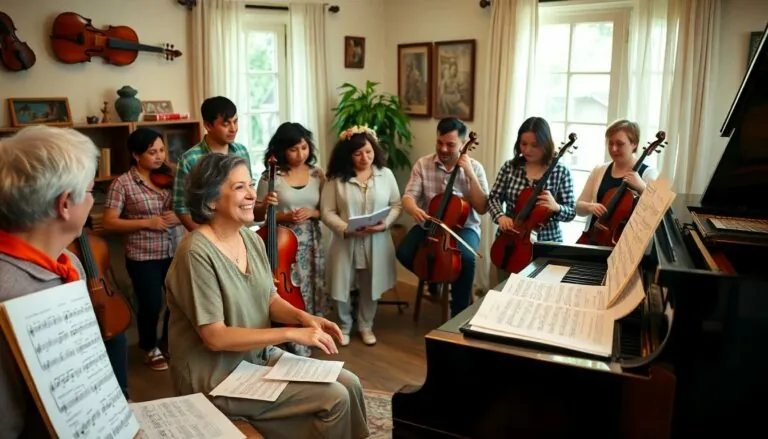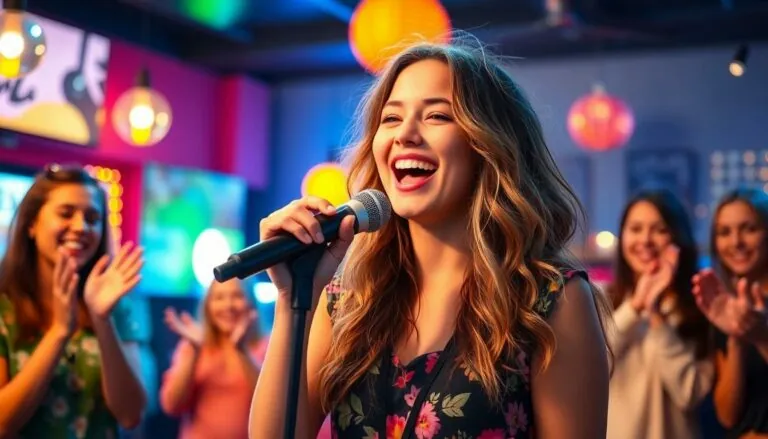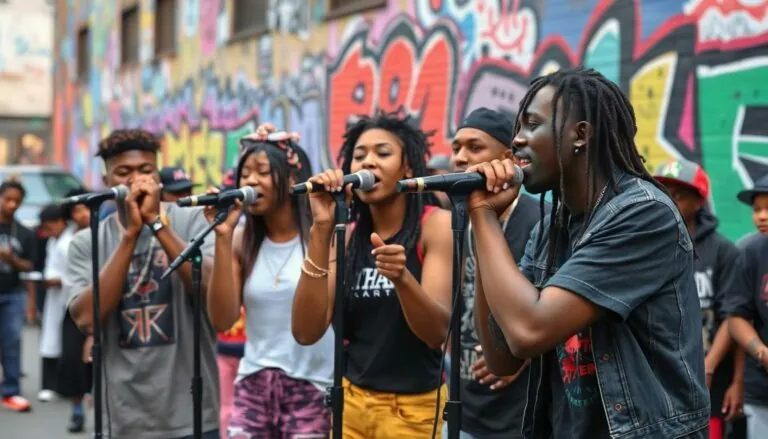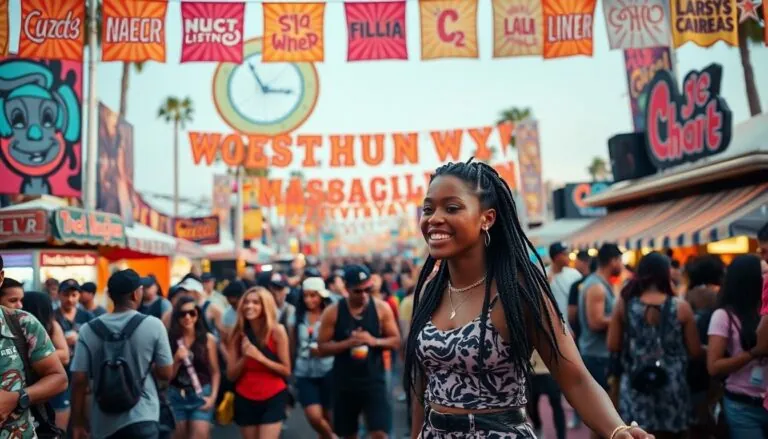Table of Contents
TogglePop dance music is the heartbeat of every party and the soundtrack to countless unforgettable moments. It’s that infectious blend of catchy hooks and irresistible beats that makes even the most reluctant dancer want to bust a move. Whether it’s the latest chart-topping hit or a hidden gem from an underground artist, this genre knows how to get people on their feet and grooving.
Overview of Pop Dance Music
Pop dance music thrives on its energetic rhythms and captivating melodies. This genre often blends elements from various styles, including electronic, disco, and funk. Artists embrace innovative production techniques that enhance the overall sound, making tracks appealing to both mainstream audiences and niche listeners.
Catchy hooks drive this genre, inviting listeners to sing along while they dance. Many tracks utilize memorable choruses that stick in people’s minds. They engage with lively beats that create an atmosphere perfect for parties, clubs, and events.
Popular songs frequently dominate charts, but underground artists also play a vital role in shaping the genre. They introduce fresh ideas and sounds, pushing creative boundaries. Emerging talent contributes unique perspectives, ensuring the genre continually evolves.
Lyrics in pop dance music often focus on themes of love, joy, and self-expression. These messages resonate with fans, adding to the emotional connection with the music. Danceability remains a fundamental characteristic, inspiring individuals to move and let loose.
The global appeal of pop dance music cannot be overstated. It transcends cultural barriers and connects diverse groups of people. Festivals and events centered around dance music attract large crowds and unite fans from various backgrounds.
Whether through mainstream hits or underground gems, pop dance music remains an influential force in the music landscape. Its ability to bring people together through rhythm and melody solidifies its place as a genre of celebration and joy.
Key Characteristics of Pop Dance Music
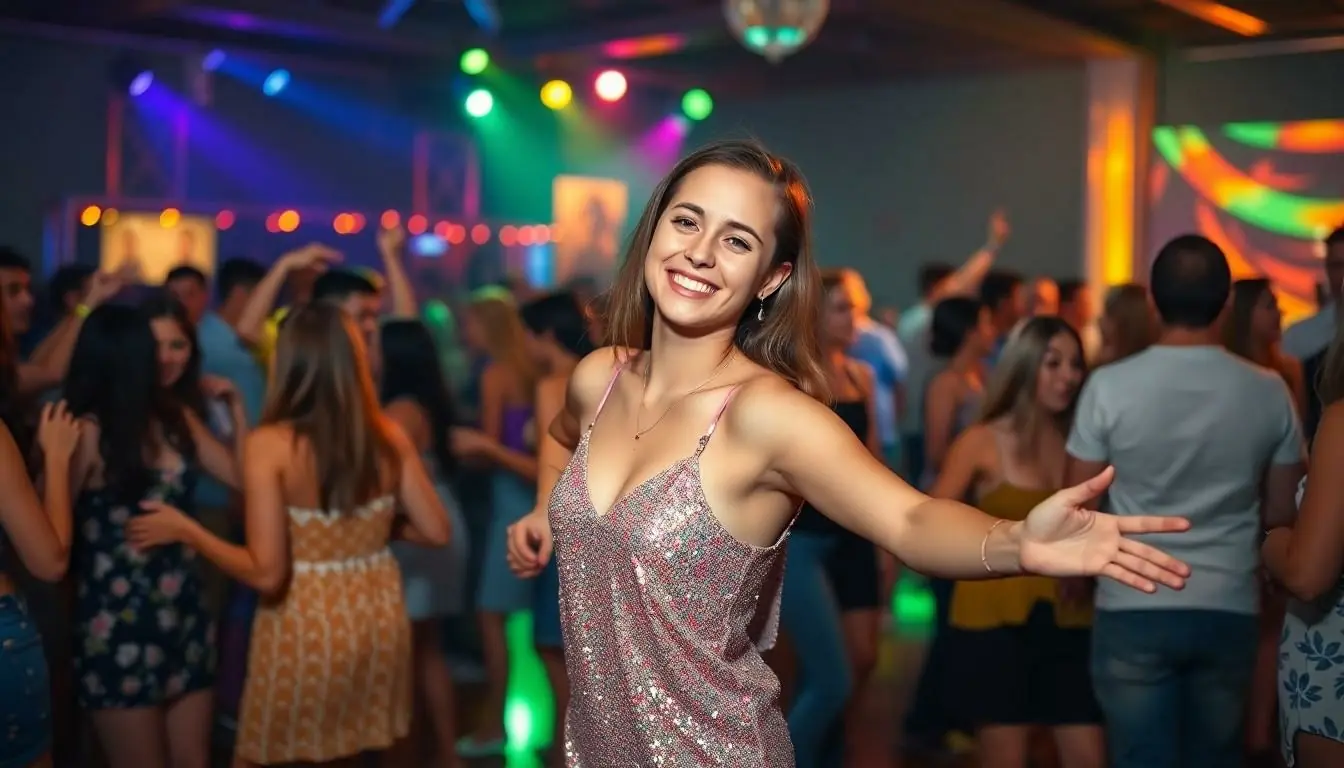
Pop dance music captivates audiences through its distinct characteristics. Key elements include upbeat tempos, catchy melodies, and electronic components, which all contribute to the genre’s vibrant essence.
Upbeat Tempo
Upbeat tempos are central to pop dance music’s infectious nature. Rhythms typically range from 120 to 130 beats per minute, motivating listeners to move. This fast-paced energy often drives dance floors, encouraging lively gatherings. Artists like Dua Lipa and The Weeknd create tracks that exemplify this driving pace, ensuring widespread appeal. Such tempos foster memorable party atmospheres, drawing diverse crowds into the experience of shared movement.
Catchy Melodies
Catchy melodies define the sound of pop dance music. Simple yet memorable hooks resonate, allowing for easy sing-along moments. Artists often incorporate repetition and uplifting phrases, enhancing the overall enjoyment. Hits like “Levitating” by Dua Lipa showcase this strength, staying in listeners’ minds long after the music ends. Memorable choruses invite participation from audiences, making performances interactive and energizing. Engaging melodies play a crucial role in creating lasting impressions that keep fans coming back.
Electronic Elements
Electronic elements serve as a backbone in the construction of pop dance music. Synthesizers and digital production techniques elevate soundscapes, giving tracks a modern edge. Contributions from genres like house and techno create a fusion that appeals to various audiences. Artists often layer sounds, adding depth to their work. Notable tracks frequently feature bold bass lines and rhythmic synthesizers that enhance the overall vibe. Electronic influences not only modernize the sound but also encourage collaboration among artists, fueling constant genre evolution.
Influential Artists in Pop Dance Music
Pop dance music boasts a rich lineage of artists who have shaped the genre through their innovative sounds and captivating performances.
Iconic Figures
Madonna stands as a pivotal figure, blending dance beats with pop sensibilities. Her hits like “Vogue” showcase the genre’s ability to inspire movement and self-expression. Lady Gaga further elevates the scene with her theatrical flair and chart-toppers such as “Just Dance.” Calvin Harris revolutionizes the soundscape with electrifying production and catchy tracks like “Summer.” These iconic artists highlight the genre’s vibrant nature, inspiring generations of dancers and listeners alike.
Rising Stars
Emerging talent continually reshapes pop dance music’s landscape. Dua Lipa captures attention with infectious songs like “Don’t Start Now,” blending retro and modern sounds. The Kid LAROI brings fresh energy through collaborations that resonate with younger audiences. Rina Sawayama stands out with her genre-bending tracks, seamlessly merging dance and pop elements. Each rising star contributes unique perspectives, ensuring the genre’s ongoing relevance and evolution.
Impact of Pop Dance Music on Culture
Pop dance music significantly impacts culture through its influence on movement and style. This genre resonates across social settings, shaping both dance trends and fashion choices.
Influence on Dance and Fashion
Dance styles continually evolve alongside pop dance music, with iconic choreographies emerging from hit songs. For instance, the “Single Ladies” dance by Beyoncé sparked a global dance craze, showcasing how movement becomes a cultural touchstone. Fashion thrives under the genre’s vibrant influence, characterized by bold clothing choices and striking accessories. The aesthetic often reflects the mood of the music, with artists like Lady Gaga setting trends that fans eagerly adopt. Streetwear also gains momentum from pop dance music, as artists collaborate with designers to create memorable visual representations of their sound.
Integration in Mainstream Media
Mainstream media serves as a powerful platform for pop dance music, amplifying its reach and impact. Television shows, movies, and advertisements frequently feature dance tracks, enhancing storylines and creating engaging experiences. Popular shows like “So You Think You Can Dance” incorporate the genre, blending performance with music discovery. Music videos also play a vital role, often featuring elaborate dance sequences that captivate audiences. Through integration into commercials, pop dance music connects products to the energy and excitement that the genre embodies, effectively shaping public perception and lifestyle choices.
Pop dance music stands as a dynamic force that unites people through rhythm and melody. Its infectious beats and catchy hooks create an atmosphere of joy and celebration, making it a staple at parties and events. The genre’s ability to evolve while embracing both mainstream and underground influences ensures its lasting appeal.
As artists continue to innovate and push boundaries, pop dance music will remain a vital part of the cultural landscape. Its impact on movement, fashion, and social gatherings highlights its significance beyond just sound. With each new track, the genre invites listeners to dance, sing, and connect, reinforcing its role in shaping memorable experiences.


